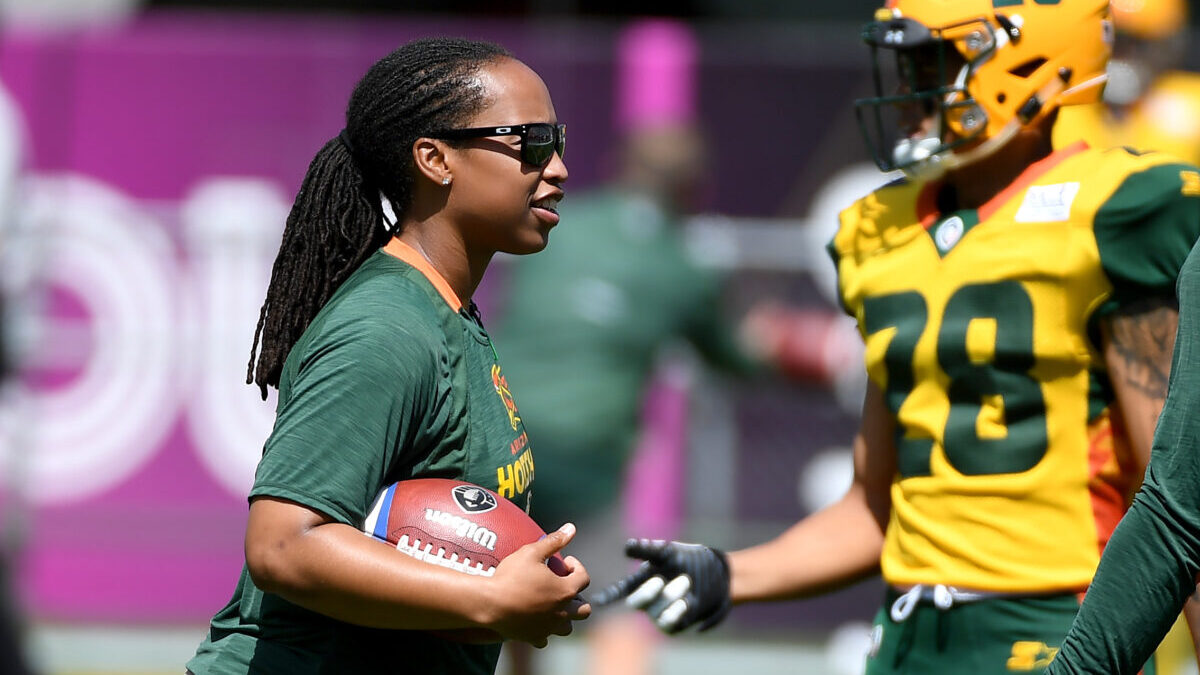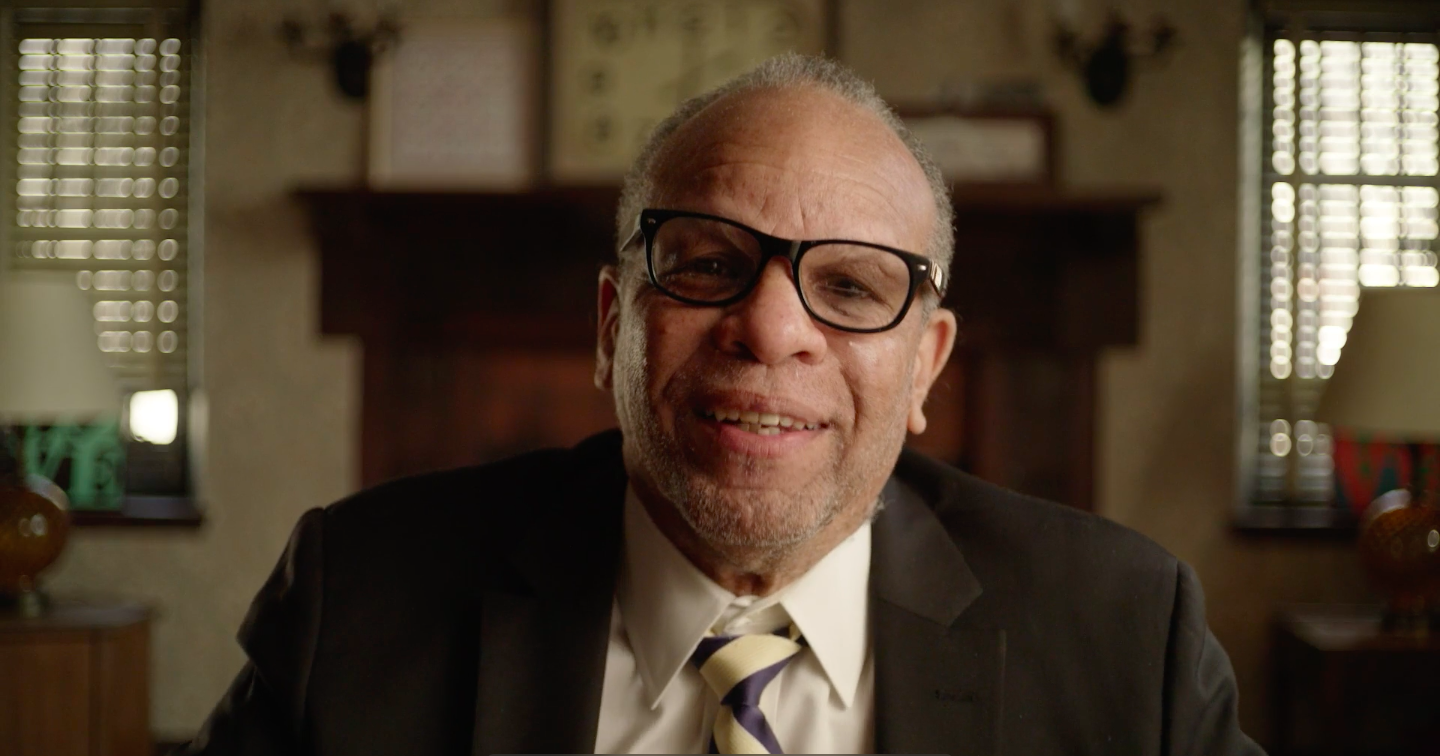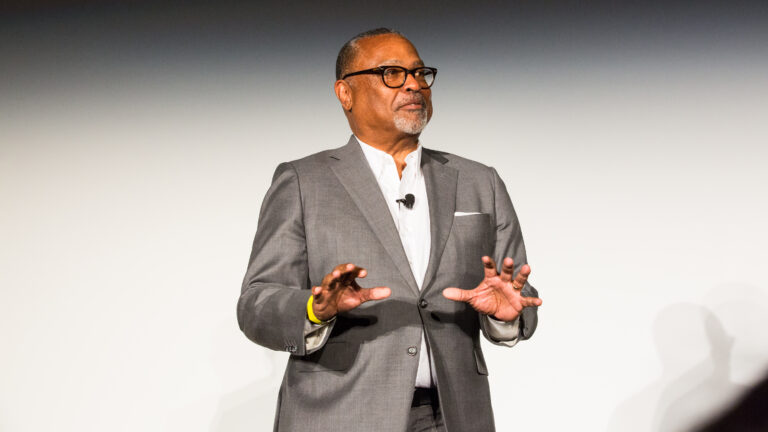Will Women Breaking Barriers in the NFL Drive Progress Forward?
Why this matters
Women have achieved several “firsts” as NFL coaches recently, but their numbers remain small. And only a few head coaches are people of Color. Is the game changing to become more inclusive of women and people of Color as coaches?
Women are making history in the NFL. Super Bowl LV will be the first with two women coaches on the sidelines, the Tampa Bay Buccaneers’ assistant defensive line coach Lori Locust and assistant strength and conditioning coach Maral Javadifar, and a woman officiating. Sarah Thomas will be the first woman to officiate at a Super Bowl.
In late January, when Jennifer King was hired as assistant running backs coach for the Washington Football Team, she became the first Black woman to serve as a full-time assistant position coach in the NFL. And Washington’s head coach, Ron Rivera, is one of five head coaches of Color.
Also in late January, David Culley was named head coach of the Houston Texans, making him the third Black head coach in a league of mostly Black players. Robert Saleh reportedly became the NFL’s first Muslim head coach when he joined the New York Jets. The other head coaches of Color are the Pittsburgh Steelers’ Mike Tomlin and the Miami Dolphins’ Brian Flores.
For the NFL, this amounts to several notable hires that increase diversity. But the league’s coaches still lack diversity in both gender and race. The 2020 season began with only four head coaches of Color, down from eight in 2018.
The number of assistant coaches of Color rose slightly between 2019 and 2020, from 33.6% to 35.6%, according to the Institute for Diversity and Ethics in Sport (TIDES) 2020 Racial and Gender Report Card for the NFL. But will greater diversity among assistant coaches eventually trickle up to the head coach level?
Not necessarily, said Richard Lapchick, Director of TIDES at the University of Central Florida. For example, several teams interviewed Kansas City Chiefs Offensive Coordinator Eric Bieniemy for their head coach positions, “and everybody’s saying he’s the best offensive mind out there that’s not a head coach now,” but he hasn’t been hired, Lapchick said. “You could add 50 assistant coaches, but if you’re not going to hire Eric and some of the other top [coaches of Color] that were in that pool this year,” that doesn’t change anything at the head coach level.
“It’s certainly very discouraging that, for three straight years, we’ve seen either no movement or an actual decline in the number of Black head coaches,” Lapchick said.
This season, eight women were among the NFL’s assistant coaches. That’s an uptick from two in the two previous years. No woman had been an assistant coach until 2016.
“Regardless of how you look at it, there is a glass ceiling above both women and coaches of Color,” said Rachel Lofton, Project Coordinator at the Global Sport Institute and co-author of its Field Studies: NFL Head Coach Hiring and Pathways in the Rooney Rule Era. You know the names of the head coaches of Color, because there are so few, “and even though these numbers of women are growing, you can still count them on two hands,” she said.
Progress and barriers
The NFL has been working to increase diversity through various avenues, including the Fritz Pollard Alliance, the Women’s Interactive Network, and the Bill Walsh NFL Diversity Coaching Fellowship. The league also expanded the Rooney Rule to require teams to interview at least two external minority candidates for head coach vacancies and at least one minority candidate for coordinator vacancies.
Also, all 32 clubs will host a coaching fellowship program geared toward minority and female candidates, such as the Bill Walsh fellowship. Tomlin, King, Locust, Callie Brownson (the first woman to be a position coach), and Katie Sowers (the first openly LGBT coach) participated in this fellowship.
Despite these efforts, the NFL seems to lag behind other sectors of society where diversity is generally accepted as good for business, because it enhances productivity and innovation. Having more diversity on your staff “is a value add,” said Nicole M. LaVoi, director of the Tucker Center for Research on Girls & Women in Sport at the University of Minnesota. “It’s not a gimmick.”
“We learn different things from people that are different than us. Different perspectives, maybe different beliefs, and different experiences, certainly,” LaVoi said. “Having a coaching staff full of people that are all the same is not optimizing your performance capabilities.”
So why aren’t more women and men of Color being hired? Unconscious bias may play a part.
The NFL’s 2020 Diversity & Inclusion report notes: “In addition to increasing the number of qualified candidates of Color who interview for each open coordinator, head coach and general manager position, it is imperative to ensure that these qualified candidates are perceived as being ‘qualified’ by the individuals who make the hiring decisions…. The findings in the current study reiterate the need to develop and implement bias-lessening processes and procedures with respect to the hiring process….”
One of the barriers women face is access, Lofton said. In the Field Studies data, she noticed that most of the women hired had gone through some type of development program.
“There are plenty of women with knowledge and competence, and passion, and work ethic” who have been denied the opportunity to even be considered for coaching positions, LaVoi said.
“There’s a common assumption in the world of sport, specifically men’s sport, that you have to have played the game to coach the game,” but many NFL coaches never played in the NFL, so that’s a false narrative, LaVoi said.
People may think women simply don’t belong in football. “Sport is a unique domain, because it’s about performance. And there’s no better symbolic and actual representation of men and masculinity in our society than American football,” LaVoi said. “As a sociologist, I would have to say it’s about power—it’s about men and White men retaining their power in the world of sports. As soon as you start opening up positions of power to people that are not White men, then their power base starts to erode. Most people who have power do not like to share it with people outside their group.”
People may argue that, because all but one of the women hired as assistant coaches are White, efforts to bring in more women might mean fewer Black men get hired.
“This is a game that White people have played throughout our history. We White men have pitted women and people of Color against each other as if they’re going for the same jobs,” Lapchick said. The 2020 TIDES report listed nearly 800 assistant coaches, and only eight were women. “That’s a lot of latitude,” he said.
“It’s this old zero sum argument that if you hire a woman, it’s taking the opportunity away from a man. But what gets lost is that women are being hired because they’re qualified and competent. It’s not a publicity stunt,” LaVoi said.
Changing the game
“We need more coaches like Bruce Arians, who are opening up opportunities,” said Karen Gallagher, Senior Researcher at the Global Sport Institute and co-author of Field Studies. The Buccaneers became the first NFL team with two women coaches on staff when Arians brought in Locust and Javadifar. “It has to come from leadership to open those opportunities,” Gallagher said.
For recent hires, “the longevity is going to be important to monitor here,” Gallagher said. Some of the women and men of Color who have been hired did not stay in their positions long.
NFL decision-makers may start to feel pressure from players. Athletes in many sports have stepped up as advocates for racial justice in the past year. Lapchick said he thinks this will extend to the NFL’s lack of Black head coaches.
“I think the biggest game changer will be when the player activism turns to the head coaching positions, and players say, ‘I’m not going to play here anymore, because my team isn’t really giving a fair chance to Black head coaches,’” Lapchick said. “When that happens across a lot of numbers and players, then we’re going to see more Black head coaches hired.”
Representation matters
King’s visibility as a Black woman in her role may help normalize both women and people of Color as NFL coaches.
“It counters the narrative that women can’t or don’t want to coach football,” LaVoi said. “It’s also inspirational, educational, and aspirational.”
Normalizing women as coaches in men’s sports more broadly would help, Lofton said. “Just as we’re educating all of our young girls about these women breaking barriers, I think we need to be educating young boys about seeing women in these positions as well.”
Gallagher agreed. When looking at the pipeline for coaches, “we have to take it all the way back to youth football and high school,” she said. “If we don’t have that visibility there, how can we expect to have it here?”
Locust, Javadifar, and Thomas’s visibility at the Super Bowl is significant. “It’s a huge game with so many eyes on it, especially right now, during this time where people are craving sports and everyone’s at home watching,” Lofton said. “I hope that boys and girls will see it and are inspired.”
Representation is important for fans as well, Lofton pointed out. “A lot of female fans consume sports, and so I think to see themselves represented at all levels of sport is exciting.”
Monthly Issue
How the NFL Moves Forward
18 years after the inception of the Rooney Rule, data shows a lack of forward progress when it comes to diversity at the highest levels of leadership in the NFL.
What actions are necessary to move the chains on safety, equity, and inclusion in the league?







